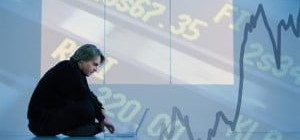 While the range of financial products and derivatives that are available on the contemporary market may have increased significantly over the course of the last decade, there are a select few that remain more popular than others. Take the Forex market, for example, which sees an estimated $5.3 trillion dollars traded on a daily basis and offers unparalleled level of leverage and liquidity to traders.
While the range of financial products and derivatives that are available on the contemporary market may have increased significantly over the course of the last decade, there are a select few that remain more popular than others. Take the Forex market, for example, which sees an estimated $5.3 trillion dollars traded on a daily basis and offers unparalleled level of leverage and liquidity to traders.
With great reward comes considerable risk, however, and the Forex market embodies this like no other entity. While traders can optimise their returns and earn marginal profits that are far higher than the amount they initially invested, they can also lose significantly more than they bargained for. With this in mind, you will need to enter the market with a strong knowledge basis and a predetermined strategy, and one that can cope with the rigours of the real world!B
While this may be a sound principle, what practical steps can you take to become an informed, skilled and ultimately successful Forex trader? Here are some of the most effective: –
Hone your skills through a Demo Account
Perhaps the single greatest innovation in recent times has been the emergence of online brokerage sites, which help to facilitate trades and connect investors to a wealth of options and analytical tools. These resources also host demo accounts, which simulate real-time financial market conditions and enable traders to hone their skills in a completely risk free environment.
Demo accounts, such as those listed here, do not require you to use your hard-earned cash to execute traders, so there is absolutely no chance of you losing out. It is also recommended that you refine your strategy and build experience through a demo account for a period of between three and six months, as this offers the optimal amount of time to experience a wealth of market conditions.
Utilise stop-losses to minimise risk
One of the examples of generic advice offered to financial traders is ‘invest an amount that you can afford to lose’. While this makes perfect sense, this can be difficult to do when dealing with the marginal returns and losses associated with the foreign exchange. So while you must take steps to invest within your means, it is also important to initiate additional measures that will offset your risk.
You can utilise a stop-loss measure on your trading account, for example, which will trigger a specific action once a trade reaches a certain, predetermined threshold. If the value of your assets are plummeting, for example, a stop-loss will initiate a sale before the price hits rock-bottom and this has the potential to minimise your losses.
Diversify your portfolio over time
As a derivative product, it is possible to profit through Forex trading even in a depreciating market. This is because you can speculate on whether or not specific currencies will gain value or depreciate, making it possible to generate income even during the depths of a wider, economic recession.
Despite this, the risk and liquidity associated with Forex trading means that you should look to diversify your portfolio over a concerted period of time. By incorporating lower risk assets such as stocks and dividends into your account, you generate more reliable returns while also optimising your chances or organically increasing your earnings as a trader.







